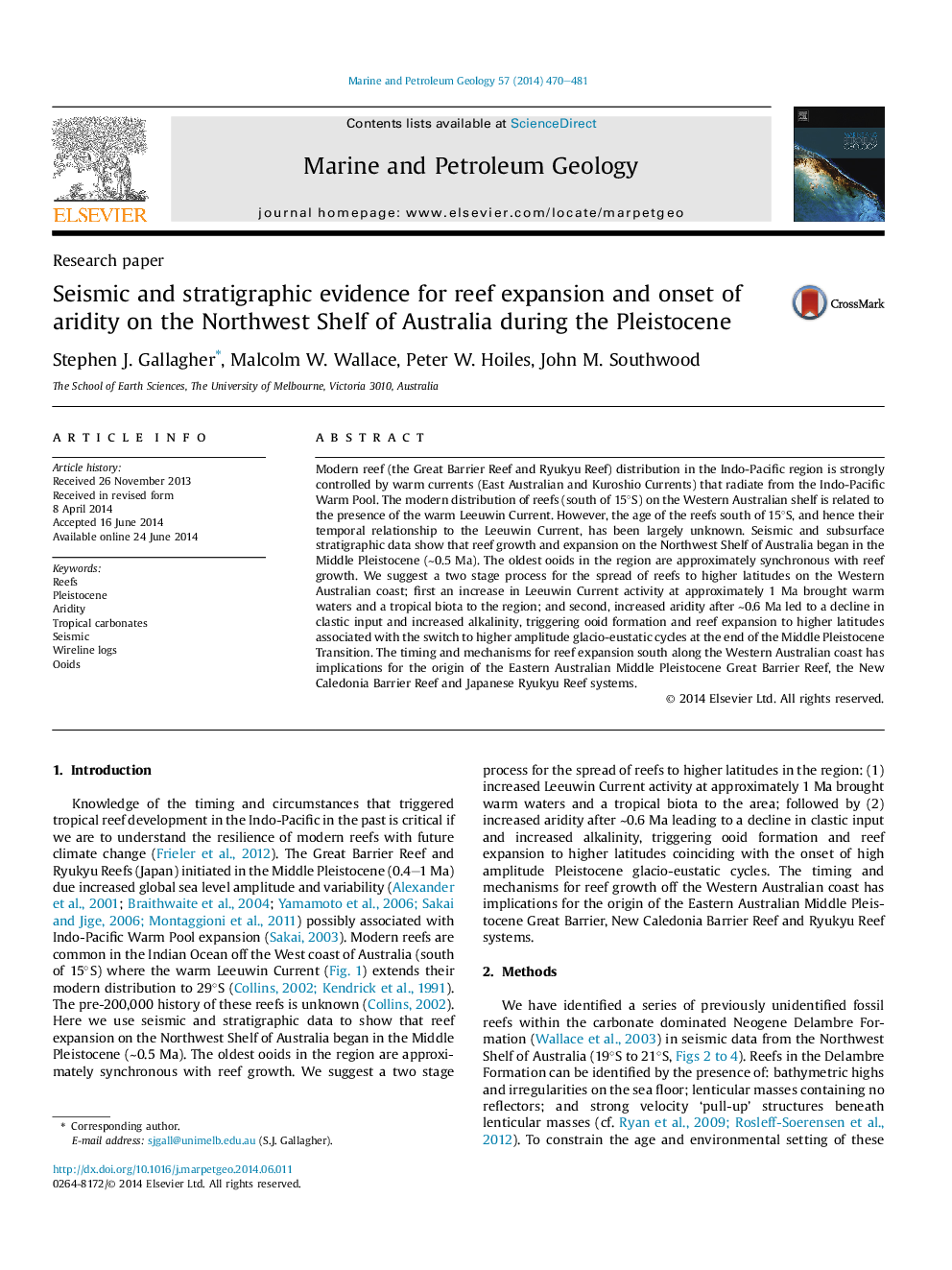| کد مقاله | کد نشریه | سال انتشار | مقاله انگلیسی | نسخه تمام متن |
|---|---|---|---|---|
| 6435384 | 1637167 | 2014 | 12 صفحه PDF | دانلود رایگان |
- A previously unknown series of fossil reefs in Northwest Australia are described.
- The reefs formed around 0.5Â Ma with the oldest ooids in the Indian Ocean.
- Reef expansion was partly due to increased Leeuwin Current intensity.
- Tropical facies expanded with the onset of aridification of Australia after 0.6Â Ma.
- These reefs formed at the same time as the Great Barrier Reef in eastern Australia.
Modern reef (the Great Barrier Reef and Ryukyu Reef) distribution in the Indo-Pacific region is strongly controlled by warm currents (East Australian and Kuroshio Currents) that radiate from the Indo-Pacific Warm Pool. The modern distribution of reefs (south of 15°S) on the Western Australian shelf is related to the presence of the warm Leeuwin Current. However, the age of the reefs south of 15°S, and hence their temporal relationship to the Leeuwin Current, has been largely unknown. Seismic and subsurface stratigraphic data show that reef growth and expansion on the Northwest Shelf of Australia began in the Middle Pleistocene (â¼0.5 Ma). The oldest ooids in the region are approximately synchronous with reef growth. We suggest a two stage process for the spread of reefs to higher latitudes on the Western Australian coast; first an increase in Leeuwin Current activity at approximately 1 Ma brought warm waters and a tropical biota to the region; and second, increased aridity after â¼0.6 Ma led to a decline in clastic input and increased alkalinity, triggering ooid formation and reef expansion to higher latitudes associated with the switch to higher amplitude glacio-eustatic cycles at the end of the Middle Pleistocene Transition. The timing and mechanisms for reef expansion south along the Western Australian coast has implications for the origin of the Eastern Australian Middle Pleistocene Great Barrier Reef, the New Caledonia Barrier Reef and Japanese Ryukyu Reef systems.
Journal: Marine and Petroleum Geology - Volume 57, November 2014, Pages 470-481
